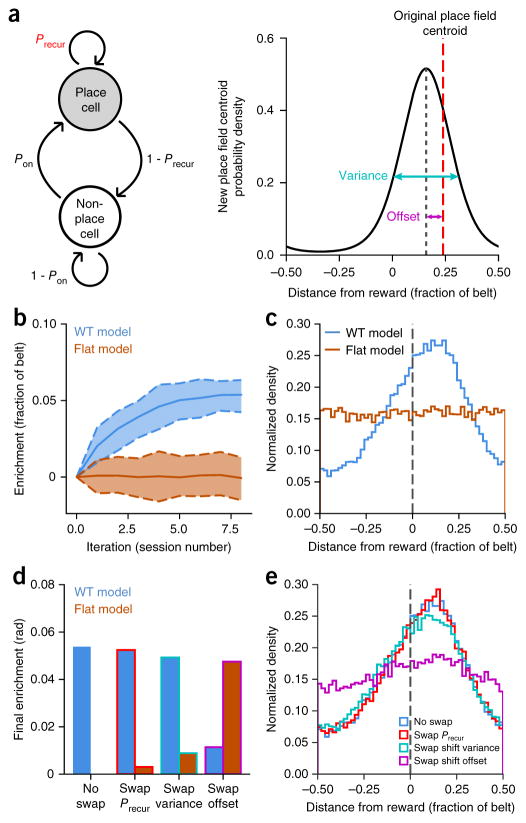Figure 7.
Place field drift toward reward drives enrichment in the place field dynamics model. (a) Schematic of place cell recurrence (left) and stability (right) model including the four parameters that were fit from our data: non-place cell to place cell transition probability (Pon), place cell recurrence probability by position (Precur), session-to-session place field shift variance and session-to-session place field shift offset. (b) Mean population enrichment by simulated iteration (solid lines) for WT and flat parameter sets (dashed lines: 90% confidence intervals from 100 simulations). WT parameters reproduce the enrichment observed during Condition III. (c) Final distribution of place fields after eight iterations for WT and flat-model parameters. Vertical dashed line denotes reward location. (d) Mean population enrichment after eight iterations with true-fit parameters and then with swapping each set of position-dependent parameters individually between WT and the flat model: recurrence probability (Precur), place field shift variance and place field shift offset. (e) Final WT place field distributions after eight iterations with the same parameter swaps as in d. Mean place field shift (offset) toward the reward is revealed as the main factor underlying enrichment in GOL.

